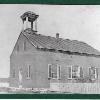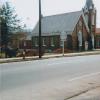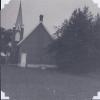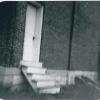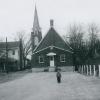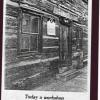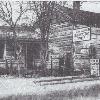Smith Creek Baptist Church
 9312 N. Congress Street PO Box 99 New Market, VA 22844 540.740.8560
9312 N. Congress Street PO Box 99 New Market, VA 22844 540.740.8560
History of Smith Creek Baptist Church
Smith Creek Baptist Church was constituted on August 6, 1756, before the United States was a country (1776) and before New Market was a town, incorporated (1796). The area was originally known as the Cross Roads as two well-known Indian trails crossed here. It is the third "regular" Baptist church started in Virginia.
If part of my record of history is not correct, please inform me at [email protected]. Thank you.
 Three well-known men (Samuel Eaton, Benjamin Griffith, and the Preacher/Revolutionary War Chaplain, John Gano) were known to have preached here on occasion at least 11 years prior to our constitution. The charter members were the Aldersons, Newmans, and Harrisons. John Alderson had purchased approximately 200 acres from Samuel Newman northeast of Cross Roads and bordering the Smith Creek. The saints established their assembly on a portion of land donated by the first pastor, John Alderson, Sr. (1699-1781) and a portion of which was donated by Samuel Newman. The church having been built near Smith Creek, and the fact that they used the creek for baptism of converts, explains our name. This early church was in the wilderness then, and withstood Indian raids, and imprisoned ministers. Pastor Alderson was registered as "a dissenting minister," and pastored here for a few years, doing double duty, as he was also the pastor of the Linville Creek Church over near the current town of Broadway. The record book of the Smith Creek Church and Linville Creek Church "is the oldest such volume found among the Baptists west of the Blue Ridge." The minutes can be viewed at the Virginia Baptist Historical Society at the University of Richmond. Pastor Alderson left the area in 1773, died in 1781, and is buried in Fincastle, VA.
Three well-known men (Samuel Eaton, Benjamin Griffith, and the Preacher/Revolutionary War Chaplain, John Gano) were known to have preached here on occasion at least 11 years prior to our constitution. The charter members were the Aldersons, Newmans, and Harrisons. John Alderson had purchased approximately 200 acres from Samuel Newman northeast of Cross Roads and bordering the Smith Creek. The saints established their assembly on a portion of land donated by the first pastor, John Alderson, Sr. (1699-1781) and a portion of which was donated by Samuel Newman. The church having been built near Smith Creek, and the fact that they used the creek for baptism of converts, explains our name. This early church was in the wilderness then, and withstood Indian raids, and imprisoned ministers. Pastor Alderson was registered as "a dissenting minister," and pastored here for a few years, doing double duty, as he was also the pastor of the Linville Creek Church over near the current town of Broadway. The record book of the Smith Creek Church and Linville Creek Church "is the oldest such volume found among the Baptists west of the Blue Ridge." The minutes can be viewed at the Virginia Baptist Historical Society at the University of Richmond. Pastor Alderson left the area in 1773, died in 1781, and is buried in Fincastle, VA.
 The schoolteacher, James "Jamie" Ireland (1745-1806), came to Cross Roads to teach in 1768. Through the consistent preaching of the Word by two friends, he came under great conviction of sin, and after struggling with the Lord, was converted by faith in Christ. After he was baptized in 1769, God called him to preach. Ireland was an itinerant preacher here and in many churches in this area for a few years and eventually spent time in Culpeper jail (1769-1770) for preaching without licensure by the "Established Church."
The schoolteacher, James "Jamie" Ireland (1745-1806), came to Cross Roads to teach in 1768. Through the consistent preaching of the Word by two friends, he came under great conviction of sin, and after struggling with the Lord, was converted by faith in Christ. After he was baptized in 1769, God called him to preach. Ireland was an itinerant preacher here and in many churches in this area for a few years and eventually spent time in Culpeper jail (1769-1770) for preaching without licensure by the "Established Church."
He also spent some time in the Culpeper jail. He died May 14, 1835. Pastor Moffett is buried in the family cemetery on Plains Mill Road, approximately 1.9 miles West from I-81 (West Hwy 211 .6 miles to Plains Mill Road. Turn right on Plains Mill Road and then turn left before the river at .3 miles to follow Plains Mill along the river. The residential driveway is .6 miles on the left and the cemetery is off the southwest corner of the resident's property.) The Baptist History Preservation Society has restored Moffett's headstone with a beautiful piece of marble. The cemetery headstones can be seen from Highway 211 (when the field is clean) as you leave Shenandoah County, looking across the field to the north between Plains Mill Road and Water Wheel Road.
 The church left their building near Smith Creek about 1791 and built a new building nearby. In 1833, a new brick building was built on Abram Street (now Seminary Lane) on land donated by Abram Savage. This building gained notoriety as it was used during the Battle of New Market, May 15, 1864 as a hospital for both Confederate and Union soldiers. The building was torn down in 1918, and the original foundation is still visible under the current garage which sits on its site. It is documented that the log building and the brick building stood side by side on adjoining lots.
The church left their building near Smith Creek about 1791 and built a new building nearby. In 1833, a new brick building was built on Abram Street (now Seminary Lane) on land donated by Abram Savage. This building gained notoriety as it was used during the Battle of New Market, May 15, 1864 as a hospital for both Confederate and Union soldiers. The building was torn down in 1918, and the original foundation is still visible under the current garage which sits on its site. It is documented that the log building and the brick building stood side by side on adjoining lots.
 Other pastors have included Christopher Keyser, Paul Yates, F. M. Perry, and Martin Urner, who pastored 20 years (1868-1888). Another of the most well-known pastors was J. B. (Joseph Burner) McInturff, who pastored here from 1888-1918. He was Superintendent of Shenandoah County Schools, founder and editor of The Strasburg News, and editor of the Baptist pamphlet The Old Paths. Arthur Campbell pastored 30 years here (1918-1948), all the while walking 13 miles across the mountain and back to Luray. Other pastors have been John Adkerson, John Waye, Howard Barnes, Robert McClure, Jack Masquelier, and Elmer Mehl. H. Nelson Pettit faithfully served with great distinction as he pastored here for 32 years (1974-2007). In 2008, Brent Hockema was called as pastor. We are thankful for men of God who have faithfully heralded forth the Gospel and truths of the Word of God in this area for over 250 years.
Other pastors have included Christopher Keyser, Paul Yates, F. M. Perry, and Martin Urner, who pastored 20 years (1868-1888). Another of the most well-known pastors was J. B. (Joseph Burner) McInturff, who pastored here from 1888-1918. He was Superintendent of Shenandoah County Schools, founder and editor of The Strasburg News, and editor of the Baptist pamphlet The Old Paths. Arthur Campbell pastored 30 years here (1918-1948), all the while walking 13 miles across the mountain and back to Luray. Other pastors have been John Adkerson, John Waye, Howard Barnes, Robert McClure, Jack Masquelier, and Elmer Mehl. H. Nelson Pettit faithfully served with great distinction as he pastored here for 32 years (1974-2007). In 2008, Brent Hockema was called as pastor. We are thankful for men of God who have faithfully heralded forth the Gospel and truths of the Word of God in this area for over 250 years.
 The building in which we meet was begun in 1899 and completed in 1902. In 1957, Pastor Barnes led in an addition off the back of this building for Sunday School classrooms upstairs and indoor bathrooms downstairs. In 1967, Pastor Masquelier led the construction out the side of the building for the current auditorium (front view) and additional Sunday school rooms (rear view).
The building in which we meet was begun in 1899 and completed in 1902. In 1957, Pastor Barnes led in an addition off the back of this building for Sunday School classrooms upstairs and indoor bathrooms downstairs. In 1967, Pastor Masquelier led the construction out the side of the building for the current auditorium (front view) and additional Sunday school rooms (rear view).
 As a side note, here is some information to the meaning of "Ketocton" and its various spellings. The Ketoctin Church cemetery gate in Purcellville, VA bears the spelling Ketoctin. The creek meandering through the church property is spelled Catoctin, as is the Mountain extending from Frederick County, MD to Loudoun County, VA in the Blue Ridge Range. The reader will also find in other literature the spelling Kittockton, Kittoctin and Kittocton. The word is derived from the American Indian tribe which dwelt at the foot of the mountain, spelled Kittocton. According to an entry in Wikipedia noting "local tradition," Catoctin means "the place of many deer."
As a side note, here is some information to the meaning of "Ketocton" and its various spellings. The Ketoctin Church cemetery gate in Purcellville, VA bears the spelling Ketoctin. The creek meandering through the church property is spelled Catoctin, as is the Mountain extending from Frederick County, MD to Loudoun County, VA in the Blue Ridge Range. The reader will also find in other literature the spelling Kittockton, Kittoctin and Kittocton. The word is derived from the American Indian tribe which dwelt at the foot of the mountain, spelled Kittocton. According to an entry in Wikipedia noting "local tradition," Catoctin means "the place of many deer."
http://www.allgetaways.com/view_destination.asp?destinationid=XGP102-NW02
http://en.wikipedia.org/wiki/Catoctin_Mountain
REFERENCES
A history for the 200th Anniversary of Smith Creek Baptist Church provided by Mrs. John P. Rice and written by Mrs. Robert Collins.
This Day in Baptist History, Vol. 1, pgs 183-184, 322-323, 422, by Dr. E. Wayne Thompson
History of the Ketocton Baptist Association, by William Fristoe
Smith Creek Baptist Church, A Beacon Light in the Wilderness, by William Algernon Good
"John Alderson" at http://www.fridley.net/alderson-p/johnaldersonbio.html
A Brief History of New Market and Vicinity, by Arthur L. Hildreth
A History of Shenandoah County, by John W. Wayland
The Shenandoah Valley Newspaper, New Market, VA, 1930
 Around 1778, Edwin Young donated three acres in Cross Roads on the west side of the Pike. About this time, there was a division among the members, and a log building was built on this property for a new meeting house.
Around 1778, Edwin Young donated three acres in Cross Roads on the west side of the Pike. About this time, there was a division among the members, and a log building was built on this property for a new meeting house.
 Anderson Moffett, the third pastor, was born in Fauquier August 28, 1746. He is best-known here because he began preaching at 17 years of age and preached 70 years, of which 50 were as Pastor at Smith Creek. The stained glass window in the front foyer of the church is in memory of him. It is documented that he began preaching in the Valley in 1781.
Anderson Moffett, the third pastor, was born in Fauquier August 28, 1746. He is best-known here because he began preaching at 17 years of age and preached 70 years, of which 50 were as Pastor at Smith Creek. The stained glass window in the front foyer of the church is in memory of him. It is documented that he began preaching in the Valley in 1781.
 Smith Creek Baptist Church is a member of the Ketocton Association of Regular Baptist Churches. When the settlers came across the Blue Ridge, people asked what their church affiliation was, and they answered that they were not associated with any established church, but that they were just regular Baptists. After the church was established in 1756, they applied for membership in the Philadelphia Association (est. 1707) and were accepted October 12, 1762.
Smith Creek Baptist Church is a member of the Ketocton Association of Regular Baptist Churches. When the settlers came across the Blue Ridge, people asked what their church affiliation was, and they answered that they were not associated with any established church, but that they were just regular Baptists. After the church was established in 1756, they applied for membership in the Philadelphia Association (est. 1707) and were accepted October 12, 1762.
 As Philadelphia was too far away for convenient attendance, Smith Creek met with the Baptist churches of Ketoctin (Loudoun County, VA) est. 1751, Mill Creek (Frederick County, VA, now Berkeley County, WV) est. 1752, and Broad Run (Fauquier County, VA) est. 1761 for mutual encouragement. The churches requested from the Philadelphia Association to begin a new association, which was granted in 1765. On August 19, 1766, the Ketocton Association of Regular Baptists was begun with these four churches as charter members. The Ketocton Association still meets for preaching, fellowship, and business in August.
As Philadelphia was too far away for convenient attendance, Smith Creek met with the Baptist churches of Ketoctin (Loudoun County, VA) est. 1751, Mill Creek (Frederick County, VA, now Berkeley County, WV) est. 1752, and Broad Run (Fauquier County, VA) est. 1761 for mutual encouragement. The churches requested from the Philadelphia Association to begin a new association, which was granted in 1765. On August 19, 1766, the Ketocton Association of Regular Baptists was begun with these four churches as charter members. The Ketocton Association still meets for preaching, fellowship, and business in August.
 John Alderson, Jr. pastored Smith Creek from 1775 - 1777. He left the area for Greenbrier, WV and eventually started the Greenbrier Baptist Church in 1781. He and his family are buried in the Greenbrier Cemetery behind the church.
John Alderson, Jr. pastored Smith Creek from 1775 - 1777. He left the area for Greenbrier, WV and eventually started the Greenbrier Baptist Church in 1781. He and his family are buried in the Greenbrier Cemetery behind the church.
The left part of this building was the original 1756 church. The logs were moved into town and the building was used for many purposes, but not for the church. The left part was attached to the front building and it became a woodworker's shop. It was later taken down in the 1970s. It stood directly across the street from the current church.
 From the introduction of William Good's A Beacon Light in the Wilderness, This is not a story about logs and brick. . . it is a story of faith, the faith of a people in their Lord and Savior Jesus Christ, and a faith that is alive today. . .in the little church by the old Wagon road.
From the introduction of William Good's A Beacon Light in the Wilderness, This is not a story about logs and brick. . . it is a story of faith, the faith of a people in their Lord and Savior Jesus Christ, and a faith that is alive today. . .in the little church by the old Wagon road.
